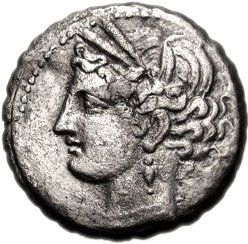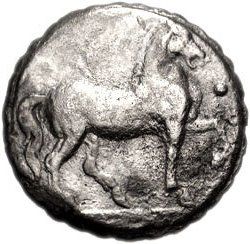Carthage Dishekel
Introduction
The Carthage Dishekel, a 2 Shekels silver coin, stands as a remarkable piece of history and artistry. This coin, issued by Carthage, holds significant value in the numismatic world due to its unique design and historical background.
Historical Background
Carthage, a prominent ancient city-state in North Africa, issued coins as a means of commerce and propaganda. The Dishekel coin, featuring the head of Tanit on the obverse and a horse on the reverse, symbolizes the cultural and economic prowess of Carthage during its time.
Coin Images
 Obverse
Obverse
 Reverse
Reverse
Design Features
The obverse of the coin showcases the elegant head of Tanit, a prominent Carthaginian goddess, adorned with a corn wreath, necklace, and single-drop ear-ring. On the reverse, a majestic horse is depicted standing to the right, with its left foreleg raised and a pellet in the right field. These intricate designs reflect the artistic sophistication of Carthaginian coinage.
Technical Specifications
The Dishekel coin has a weight of 11.69g and a diameter of 25.00mm, making it a substantial piece of silver currency. Crafted with precision, this coin exemplifies the skill and craftsmanship of Carthaginian minting techniques. Its silver composition adds to its allure and historical significance.
Collectible Value
Due to its rarity and historical importance, the Carthage Dishekel 2 Shekels silver coin holds significant collectible value. Numismatists and coin collectors covet this piece for its unique design and connection to ancient Carthage. Its market value reflects its desirability among collectors seeking to own a piece of Carthaginian history.
Conclusion
In conclusion, the Carthage Dishekel 2 Shekels silver coin stands as a numismatic treasure, embodying the rich history and artistic heritage of Carthage. Its intricate design, historical significance, and collectible value make it a prized possession for enthusiasts of ancient coins. Owning a piece of Carthaginian history through this coin allows collectors to immerse themselves in the legacy of a civilization that once thrived in North Africa.

